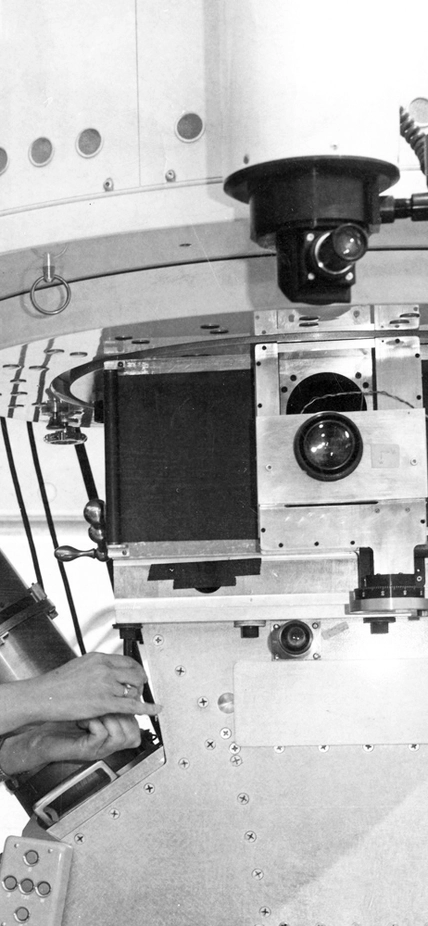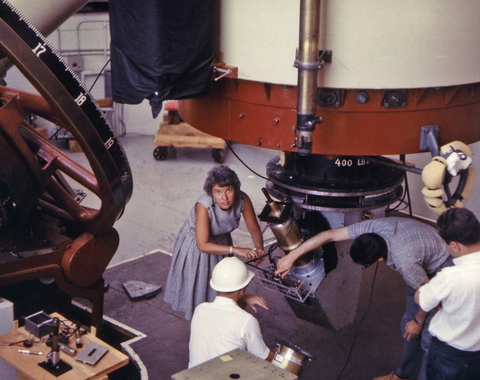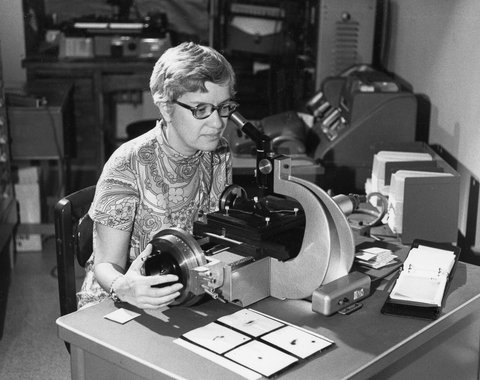1. A Gadget That Changed the Universe
Rubin and her collaborator Kent Ford revolutionized our understanding of the cosmos. Ford developed the Image Tube Spectrograph, which greatly enhanced Rubin’s ability to study a problem of great interest to her—galaxy rotation. In making precise measurements of movement of stars in spiral galaxies, she made a startling discovery. Stars at the outer edges of galaxies were rotating at the same rate as stars at their centers. This ran counter to the expectations of Newtonian physics. What could explain this mysterious phenomenon? Dark matter, a concept first proposed by theorist Fritz Zwicky and confirmed by Rubin.
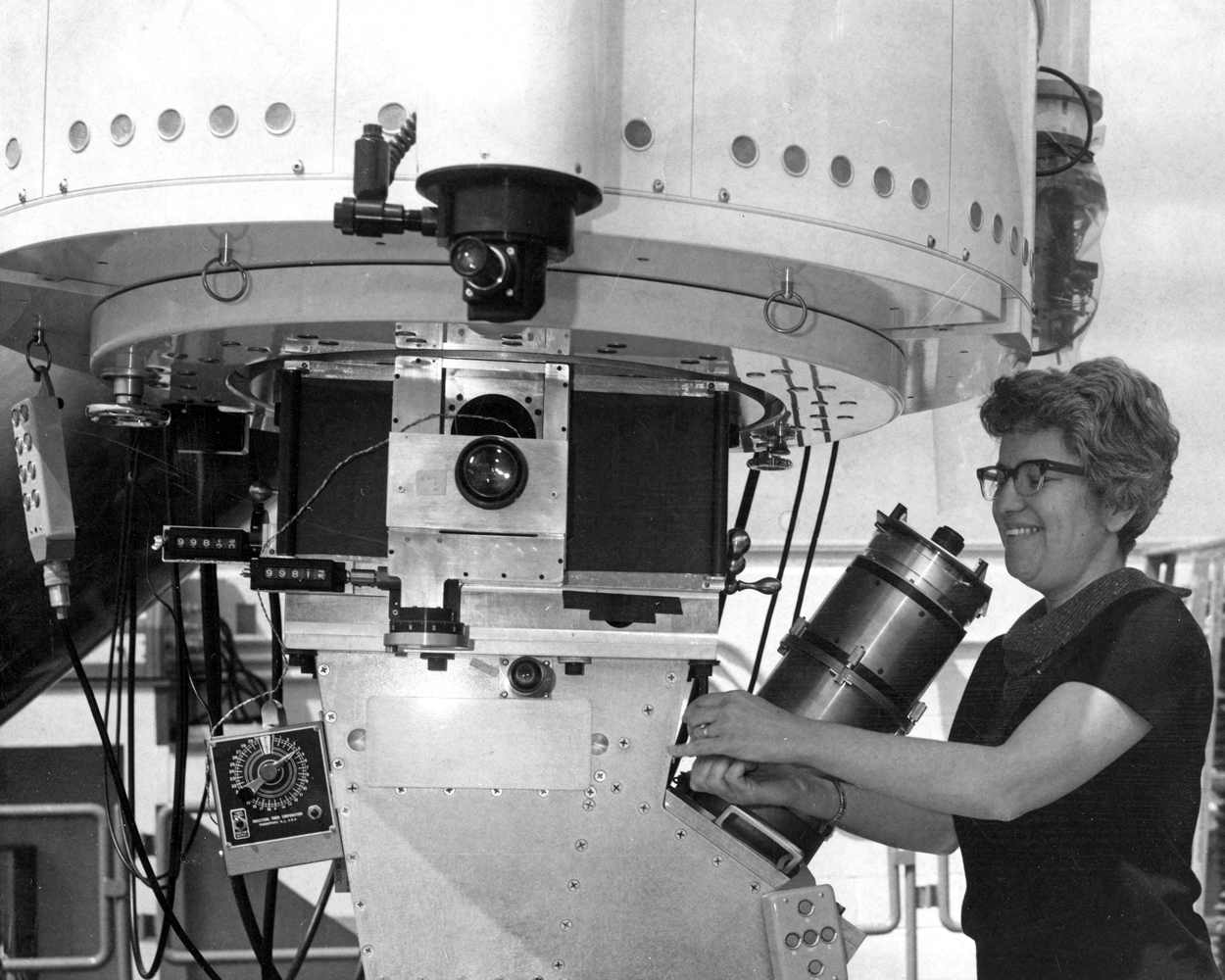
Vera Rubin using the DTM image tube spectrograph on the 84-inch telescope at Kitt Peak National Observatory.
2. A Telescope Made From a Linoleum Tube
Before Vera Rubin was peering into the farthest reaches of the cosmos, she was just a curious kid hauling a cardboard tube home on a Washington, D.C., bus. With a lens ordered from a catalog and some help from her father, Rubin built her first telescope out of a linoleum tube. Sure, it didn’t exactly track stars perfectly, but it sparked a lifelong obsession. She even wrote her school essays on telescopes—because when you’re destined to change astronomy, you start young.

Vera Rubin with her homemade telescope.
3. The Infamous Skirted Figure at Palomar
In 1965, Rubin broke barriers as the first woman to officially use the prestigious Palomar Observatory. Initially, her request to observe was denied due to the lack of facilities for women. Rubin took the problem in hand by cutting out a paper skirt and taping it over the stick figure man on the bathroom door, reportedly declaring, “There you go; now you have a ladies’ room.” The next time she observed at Palomar, the skirted woman was gone, and so was the sign for “MEN.”
One small moment of progress out of a lifetime of such moments, Rubin's bathroom edit highlights her resilience and humor in the face of the absurd everyday obstructions that women in science faced in 1965.
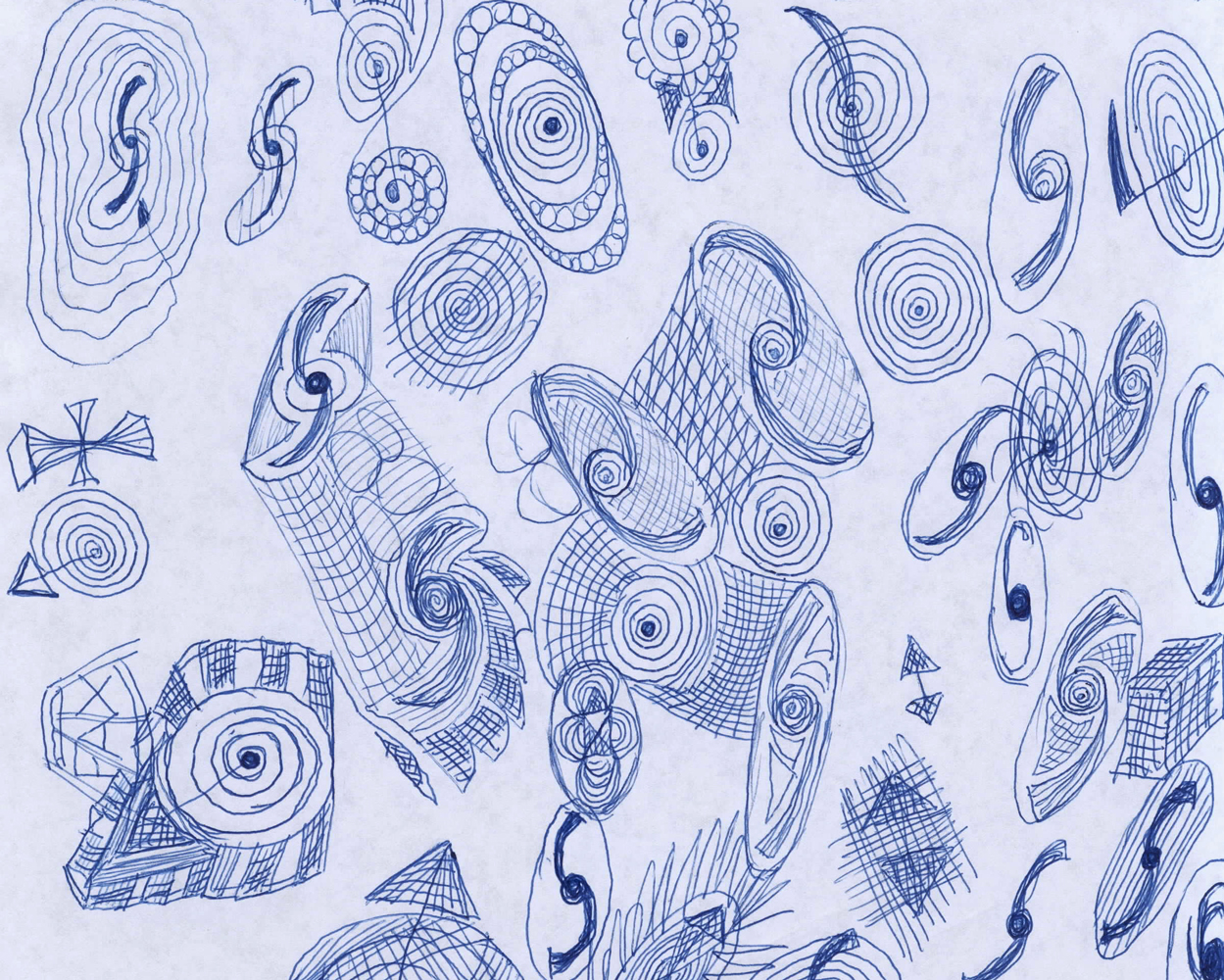
Doodles drawn by Vera Rubin. The skirt on the Palomar restroom sign wasn’t the only example of her creative flair.
4. A Presidential Medal
In 1993, President Bill Clinton awarded Vera Rubin the National Medal of Science, the highest honor in American science. Rubin didn’t just get it for confirming the existence of dark matter—she earned it for decades of groundbreaking work, mentoring young scientists, and pushing the boundaries of how we understand the universe. She paved the way for women in science not just with her discoveries, but with her voice, her leadership, and her example.
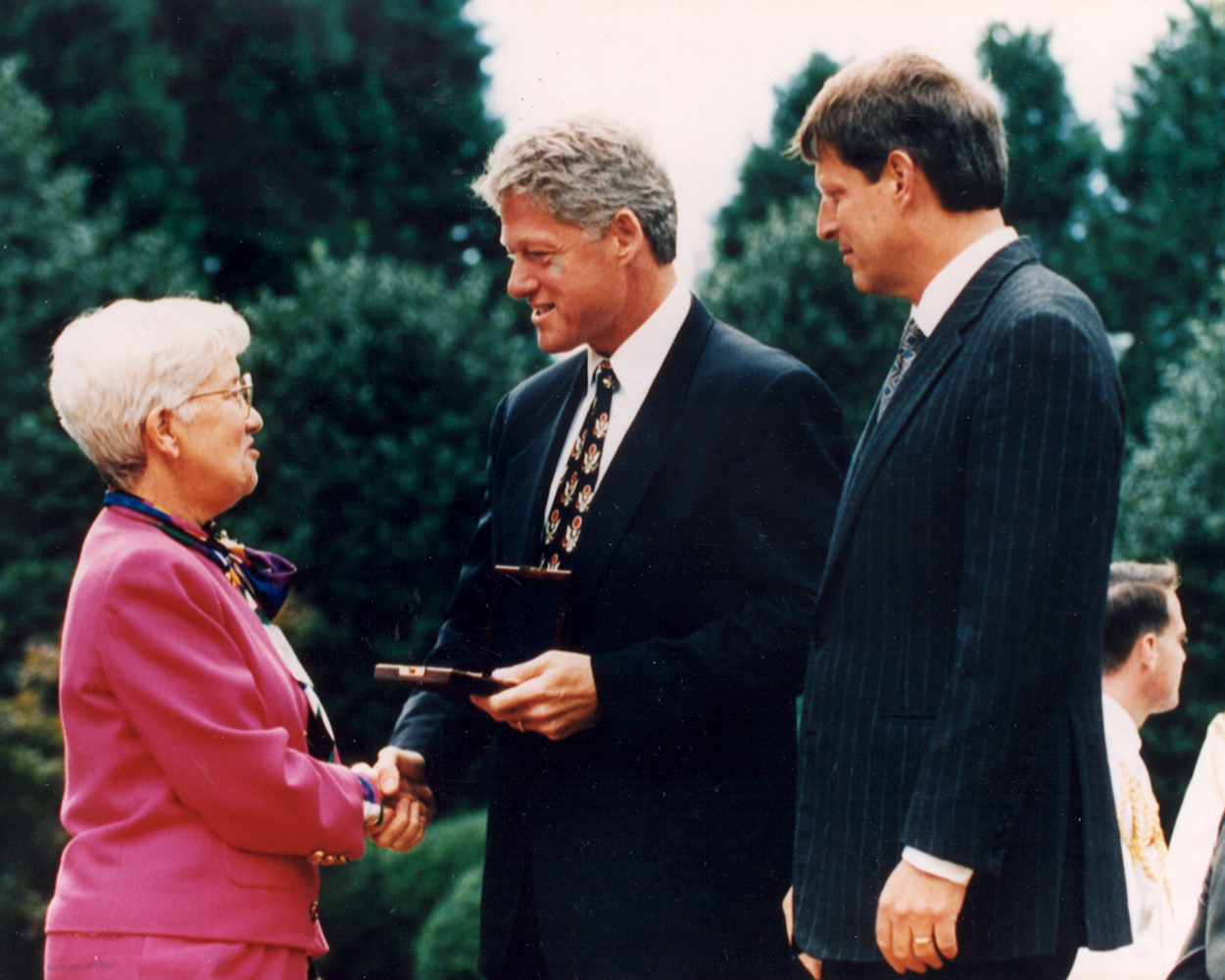
Vera Rubin receiving the National Medal of Science from President Bill Clinton and Vice President Al Gore in 1993.
5. A Forgotten Call Box in D.C. Now Honors Vera Rubin in Full Cosmic Color
In the heart of D.C.’s Chevy Chase neighborhood, an old emergency call box has been reborn as a dazzling tribute to Vera Rubin. Just steps from Carnegie Science’s Broad Branch Road campus—where Rubin spent most of her career—local artists turned the rusty relic into a radiant mosaic featuring her portrait. With its bold colors and galaxy-inspired sparkle, the installation celebrates the woman who helped uncover the invisible fabric of the universe—and adds a burst of wonder to the neighborhood sidewalk.
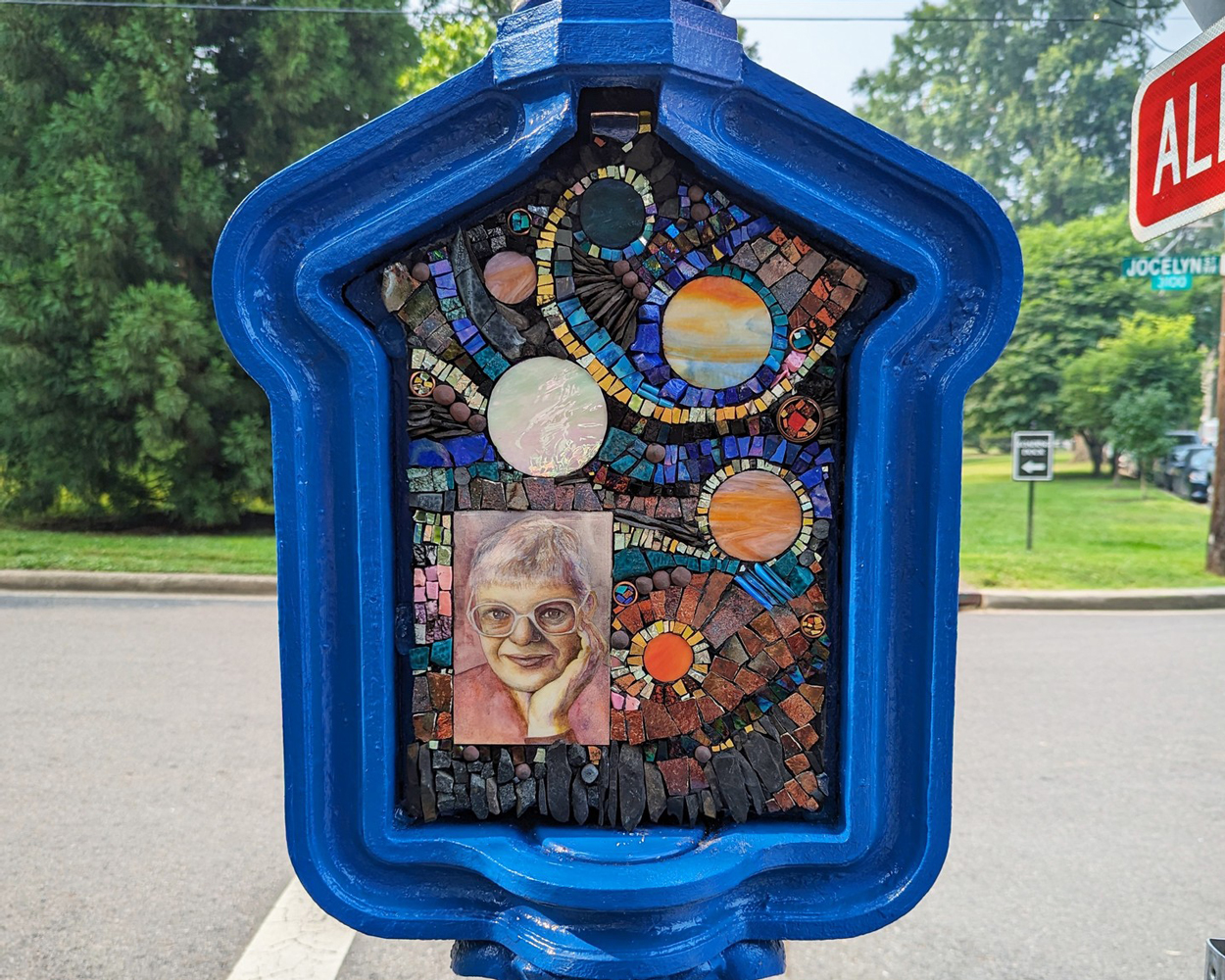
The Vera Rubin Call Box mosaic was created by local artists Danielle Feuillan, Sarah Joyce-McCarron, and Laura McCarron.
